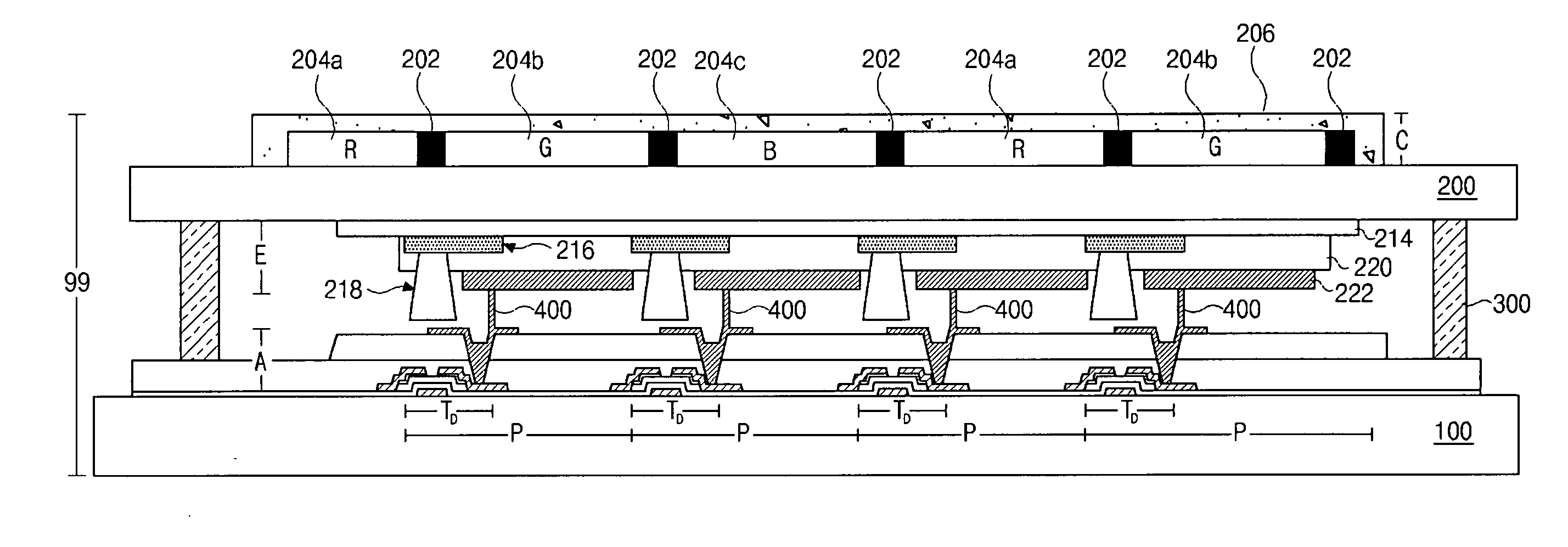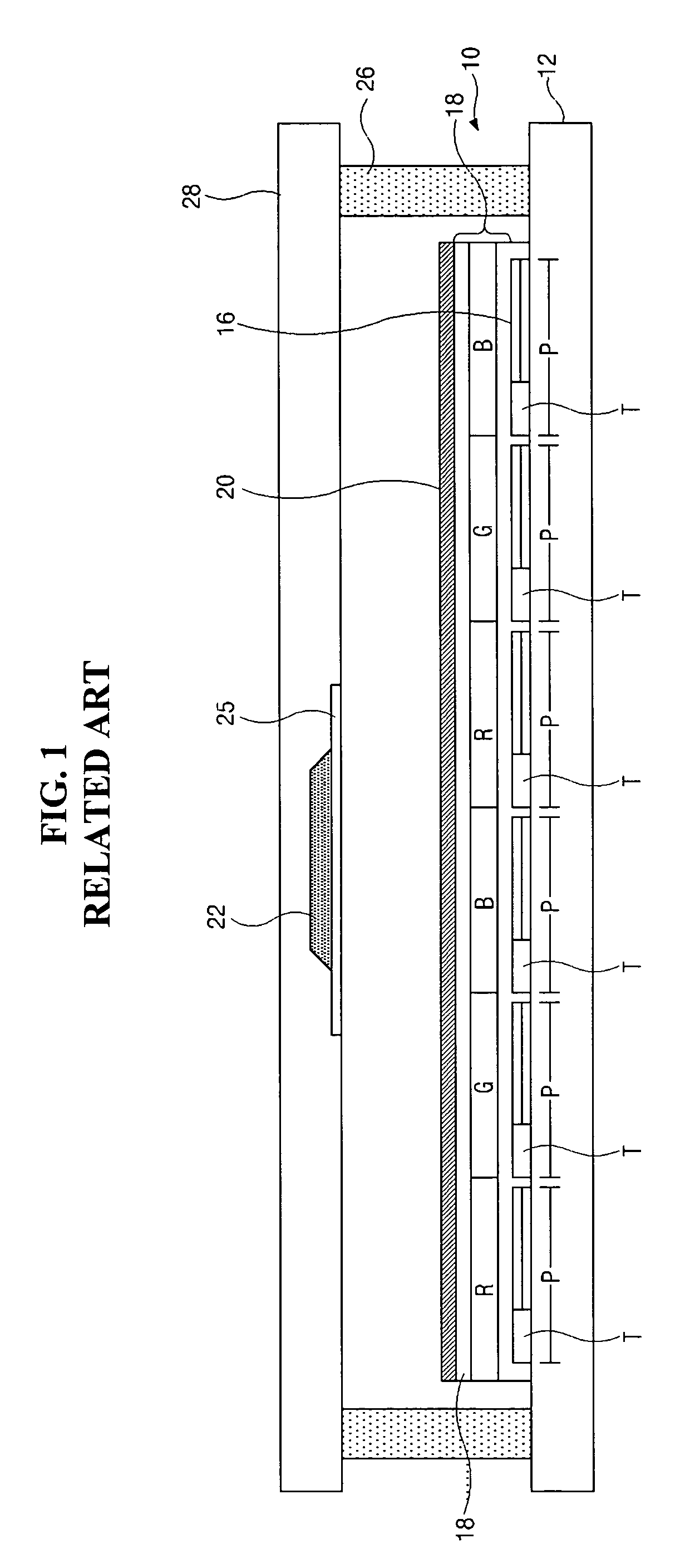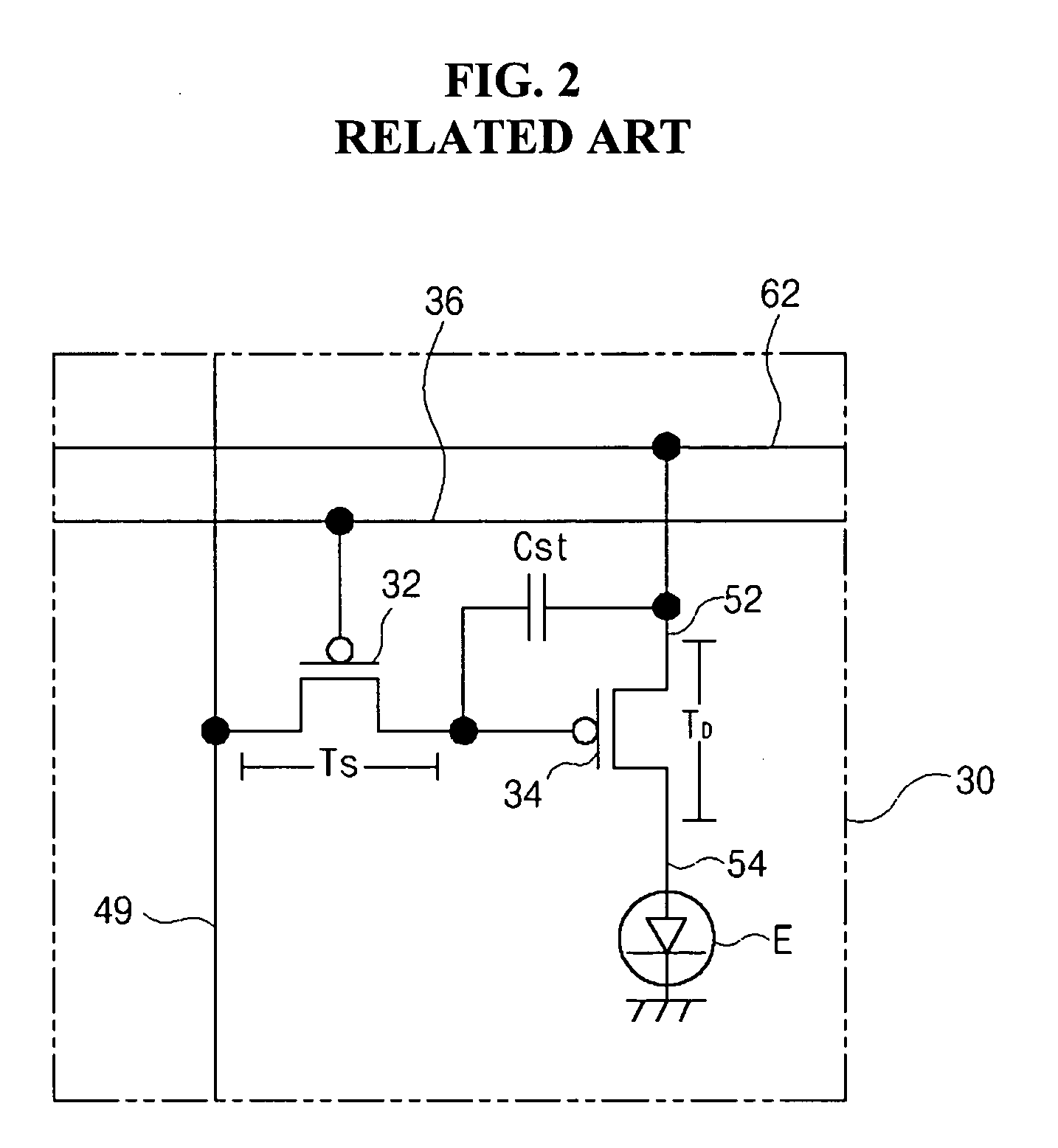Organic electroluminescent display device and method of fabricating the same
a technology electroluminescent display device, which is applied in the direction of instruments, discharge tube luminescnet screens, static indicating devices, etc., can solve the problems of high low power consumption of electroluminescent display device, and preventing use of large-area displays, etc., to achieve high aperture ratio, improve yield and productivity, and high brightness
- Summary
- Abstract
- Description
- Claims
- Application Information
AI Technical Summary
Benefits of technology
Problems solved by technology
Method used
Image
Examples
first embodiment
[0041] As shown in FIG. 3, the OELD device 99 of the first embodiment includes a first substrate 100 and a second substrate 200 that are spaced apart from and face each other. A sealant 300 is formed between the first and second substrates 100 and 200 to bond the first and second substrates 100 and 200 together. An array part A including a plurality of thin film transistors TD is formed on an inner surface of the first substrate 100. An emission part E is formed on an inner surface of the second substrate 200 (i.e., a surface facing the first substrate 100), and a color part C is formed on an outer surface of the second substrate 200 (i.e., a surface opposite to the inner surface of the second substrate 200).
[0042] In FIG. 3, the thin film transistor TD functions as a driving element of the OELD device. Although not shown, a switching element, a gate line, a data line, and a power line are typically formed on the inner surface of the first substrate 100. The switching element (not s...
second embodiment
[0064] As shown in FIG. 6, the OELD device 99 of the second embodiment may include a first substrate 100 and a second substrate 200 that are spaced apart from and face each other. A sealant 300 is formed between the first and second substrates 100 and 200 to bond the first and second substrates 100 and 200 together. An array part A including a plurality of thin film transistors TD is formed on an inner surface of the first substrate 100. An emission part E is formed on an inner surface of the second substrate 200 (i.e., a surface facing the first substrate 100), and a color displaying element is formed on an outer surface of the second substrate 200 (i.e., a surface opposite to the inner surface of the second substrate 200).
[0065] In FIG. 6, the thin film transistor TD functions as a driving element of the OELD device. Although not shown, a switching element, a gate line, a data line, and a power line are typically formed on the inner surface of the first substrate 100. The switchin...
third embodiment
[0074] As shown in FIG. 7, the OELD device of the third embodiment includes a first substrate 100 having an array part that includes a plurality of thin film transistors TD thereon, a second substrate 200 having an emission part on a surface facing the first substrate 100, and a third substrate 300 having a color displaying element.
[0075] A sealant 310 is formed between the first and second substrates 100 and 200 to bond the first and second substrates 100 and 200 together. The third substrate 300 including coloring elements 304a, 304b and 304c is attached to an outer surface of the second substrate 200 using an adhesion layer 308, which is formed on an entire surface of the third substrate 300.
[0076] In FIG. 7, the thin film transistor TD functions as a driving element of the OELD device. Although not shown, a switching element, a gate line, a data line, and a power line are also typically formed on the inner surface of the first substrate 100. The switching element (not shown) an...
PUM
| Property | Measurement | Unit |
|---|---|---|
| Color | aaaaa | aaaaa |
| Adhesion strength | aaaaa | aaaaa |
| Transparency | aaaaa | aaaaa |
Abstract
Description
Claims
Application Information
 Login to View More
Login to View More - Generate Ideas
- Intellectual Property
- Life Sciences
- Materials
- Tech Scout
- Unparalleled Data Quality
- Higher Quality Content
- 60% Fewer Hallucinations
Browse by: Latest US Patents, China's latest patents, Technical Efficacy Thesaurus, Application Domain, Technology Topic, Popular Technical Reports.
© 2025 PatSnap. All rights reserved.Legal|Privacy policy|Modern Slavery Act Transparency Statement|Sitemap|About US| Contact US: help@patsnap.com



